#Self-Sufficiency
Photo




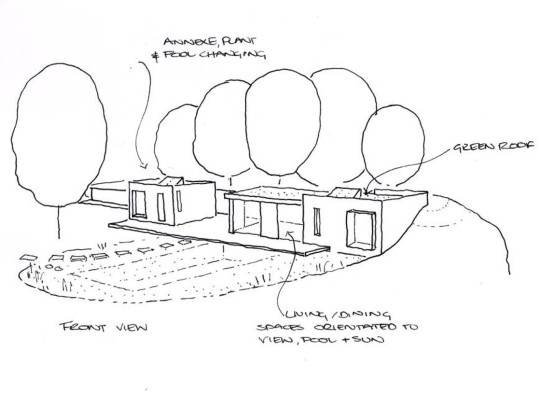
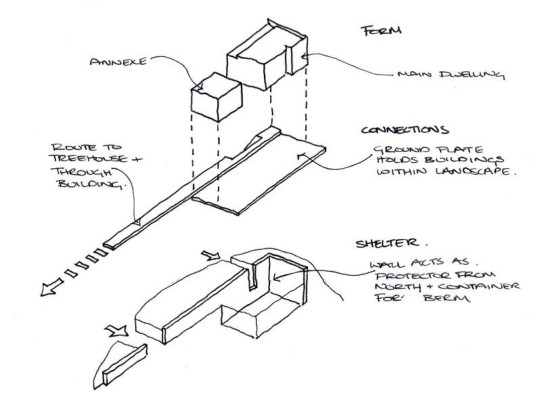



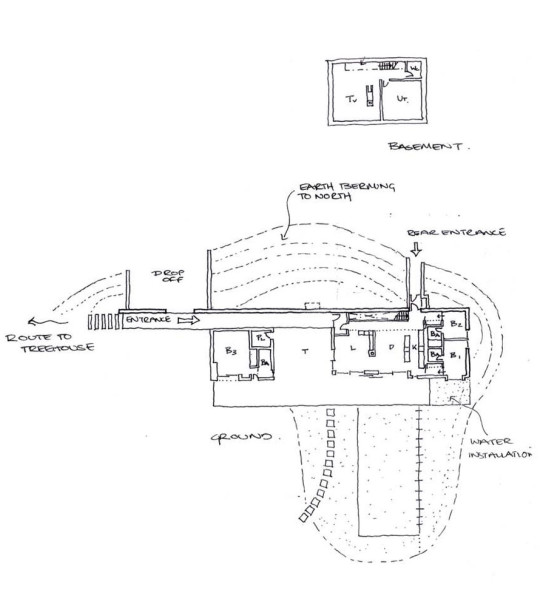
New Forest House, New Forest National Park, United Kingdom,
PAD studio
#art#design#architecture#nature#sustainability#new forest house#new forest national park#england#self-sufficiency#pad architecture#hampshire#padstudio#countryhouse#retreat#lakehouse#renewable resources
224 notes
·
View notes
Text
«Когда мужик на остановке
Спросил, какой сегодня год,
Мне захотелось жить вот так же -
Непринужденно и легко!»
#коты#позитив#видео#юмор#настроение#животные#самодостаточность#cats#positive#videos#humor#mood#animals#self-sufficiency#русский тамблер#русский блог#мотивация#motivation#русский пост
32 notes
·
View notes
Photo







Vollebak, Nova Scotia, Canada,
Courtesy: BIG
#art#design#retreat#off-grid#vollebak#nova scotia#canada#island#vollebak island#big#self-sufficiency#concept#render#luxuryhouses#luxuryhomes#clothing brand#cgiart#luxurylifestyle#billionairelife#sea#nature
120 notes
·
View notes
Text
Would you rather call it cottagecore or self-sufficiency? A short essay on rural life and self-reliance.
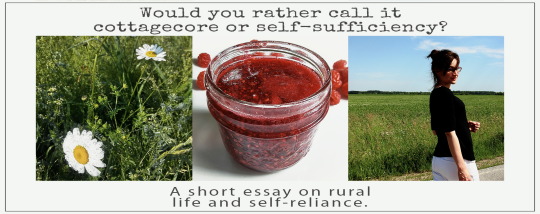
Good afternoon!
I originally intended to write about cottagecore, which is pretty much what surrounds me in this rural region. However, I have a love-hate relationship toward these social media aesthetics, which are first and foremost photography aesthetics and themes with ugly names. This said, in a context of domestic abuse, I mostly count on myself for many of my needs. It is true that self-sufficiency and food self-relience tend toward the Cottagecore sub-culture, and it is tempting to go in that direction, but it would be first and foremost lying to myself, and then to others. Therefore, I prefer to face my own reality by talking about my life journey, rather than to sweeten my speech.
I prefer to be clear, in a situation of abuse, when somebody else is controlling the budget and poverty is a reality, complete financial and material autonomy is more than a fantasy, it's a need.
Facing reality: you don't need to aim for complete self-sufficiency
In fact, to be honest, you'll never make your own medications. What is complete self-sufficiency? A myth.
This said, my aim is to improve my self-reliance, which relies on a few hobbies, such as gardening, and I invite you to do the same.
Although my production of food is far from being all-year-round, or even enough for canning and preserving, my first attempt has provided me with fresh fruits and vegetables almost every day of Summer. In terms of fruits, I have only grown strawberries and raspberries, as well as the old apple tree planted decades ago by the late owners. I have grown a wider array of vegetables, such as tomatoes, peas, snow peas, and yellow and green beans. A little bit of my protein intake came from lima and borlotti beans, and I had five fresh herbs to choose from. My biggest failures have been my onions, garlic bulbs and radishes; they were disappointingly lost to rot and drought before harvest.
Overall, this was not bigger than a balcony garden, which proves that you don't need a lot of space to feed yourself if you aim for a percentage of your plate, rather than the usual message of the internet, which is complete self-sufficiency.
Growing food can be the cure to food trauma and insecurity
If, like me, you've been traumatized by food shortages and a lack of financial freedom, growing your own food can be the necessary cure, and at relatively small costs.
At the very least, you'll control some of the food you'll have later in the season. If you're lucky, you can make preserves, or meal-prep and freeze.
Baking and bread-making
This is something I was already doing, and there is something special about having a dessert or a slice of fresh bread, still warm from the oven.
All winter long, I try to do something inspired by the Swedish fika concept, and use these months to plan ahead for Spring.
Needle arts are far from dead
From cosplay to insta-worthy embroidery, the needle arts are far from dead, despise their temporary rejection at home, as shopping malls and hypermarkets became my own parents' stress-relief and boredom-killing hobby. From a personal point-of-view, their consumption habits were far from my values, and I have come back to sewing and knitting to supply a percentage of my wardrobe. I've also tried to make very simple jewelry.
The initial cost is not always cheaper to make your own, because you will possibly choose a thicker, high-quality fabric, that will hopefully last longer, which is where you can really save.
I often like to remind myself that this is not child labour, but my own labour; and it makes a world of a difference from a moral standpoint.
♫ These boots were made for walking, and that's just what they'll do ♬
When I have decided to get back in shape, I didn't have the financial means to pay a subscription at the gym. However, did you notice the free sports you can start doing today?
I have started walking almost every sunny day, and it has greatly improved my cardio-vascular health, as I was enjoying the scenery and leaving my problems at home, behind a closed door.
When bad weather forces you to stay inside, there are still many Youtube channels to watch, and I have even found a few workout television shows on major channels. They tend to be at 6am, though, and they have to be recorded to watch them as a hobby, instead of a morning chore.
Which comes to a conclusion: dis I really ever intend to write about the Cottagecore movement and its photography aesthetic, or simply about real life and self-care? I'd say the latter, for this is what feels better, and always will.
#lifestyle#self-sufficiency#food self-sufficiency#clothing self-sufficiency#cottagecore#cottagecore aesthetic#garden#gardening#baking#homemade baking#needle art#sewing#knitting#self-reliance#jennifersblog
42 notes
·
View notes
Text









#dividers#Royaltycore#Princecore#Princesscore#Kingcore#Queencore#Victorian style#gears#clocks#screws steam engines#brass#top hats#waistcoats#crinoline#goggles#dials#eclecticism#self-sufficiency#efficiency#Hyperfemininity#romance#luxury#embracing your femininity#youth#ghotic#vampire#vampcore#messy board#messy icons#fashion
87 notes
·
View notes
Text
Salisbury Autism Care: A Safe Haven of Assistance for People on the Autistic Spectrum
The modern world has witnessed a notable increase in the knowledge and comprehension of autism spectrum disorder (ASD). Nevertheless, despite these advancements, people on the autism spectrum continue to have difficulties going about their everyday lives. This is where groups like Salisbury Autistic Care come in, offering people with ASD priceless assistance and creating inclusive communities.
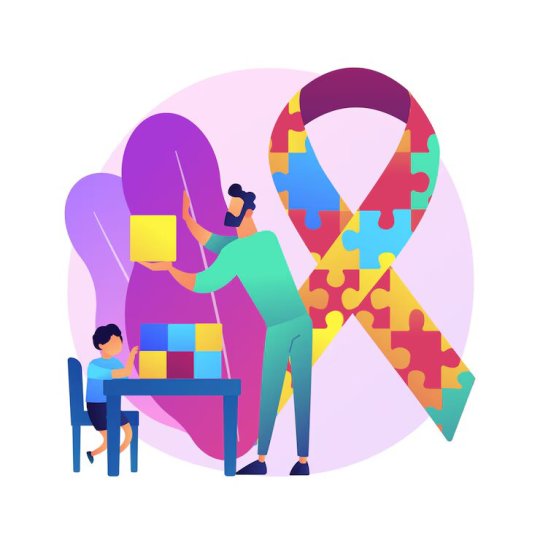
Understanding Autism Spectrum Disorder
Prior to discussing Salisbury Autistic Care's position, it is important to comprehend what ASD is. Difficulties with communication, social interaction, and repetitive behaviors typify the developmental illness known as autism spectrum disorder. Since every person with ASD has a different set of strengths and problems, it is essential to approach care and support from a personalized perspective.
Salisbury Autism Care Offers Holistic Support
Salisbury Autistic Care: A Haven of Support for Individuals on the Autism Spectrum They understand the value of providing people on the autistic spectrum with comprehensive care. Their strategy prioritizes fostering each person's total well-being rather than just attending to their immediate needs. The facility provides an extensive array of services that are customized to satisfy the various requirements of its clientele, ranging from educational programs to therapy sessions and vocational training.
Boosting Self-Sufficiency
Their fundamental tenet is enabling people with ASD to live autonomous, satisfying lives. Through tailored support plans and skill-enhancement programs, they furnish their clients with the necessary resources to adeptly handle diverse facets of everyday existence. At every stage of the process, from acquiring work prospects to learning vital life skills, the facility is committed to promoting independence.
Building Inclusive Communities
Apart from offering immediate assistance to people with ASD, Salisbury Autistic Care is essential to fostering inclusive societies. Salisbury Autistic Care: Creating Inclusive Communities for Individuals on the Autism Spectrum encourages awareness and acceptance of autism; they collaborate closely with businesses, community organizations, and educational institutions. Through increasing awareness and offering training, they contribute to creating circumstances where people with ASD can flourish without encountering prejudice or stigma.
Teaching the Community
Fostering empathy and understanding for people with ASD requires education. Salisbury Autistic Care regularly participates in community outreach initiatives, educating the public about autism spectrum disease through workshops and seminars. They help to create a more inclusive society where people with ASD are recognized for their unique qualities by dispelling myths and giving correct information.
Teaching the Community
Fostering empathy and understanding for people with ASD requires education. They regularly participate in community outreach initiatives, educating the public about autism spectrum disease through workshops and seminars. By dispelling myths and giving correct information, they help create a more inclusive society where people with ASD are recognized for their unique qualities.
In summary
For those who are autistic and their families, Salisbury Autistic Care is more than just a service provider—it's a ray of hope and support. By using a holistic approach, they create inclusive communities where everyone is appreciated and embraced, enabling people with ASD to realize their full potential. Salisbury Autistic Care is improving the lives of thousands of autistic people and their families by carrying out their purpose of advocacy, education, and support.
#autism spectrum#salisbury autistic care#education#and support.#purpose advocacy#Teaching the Community#Inclusive Communities#Self-Sufficiency#Holistic#Autistic Spectrum#Haven of Assistance for People
11 notes
·
View notes
Quote
Prayerlessness clearly demonstrates a belief in our own self-sufficiency.
Tony Merida
21 notes
·
View notes
Text
Capsicum update, 7th day 🫑 🫑 🫑
2 notes
·
View notes
Text
僕がなぜ自給自足を目標とするのか、やりたいのか…
動物たちが自給自足の生き方をしているのと同じように、人類も何百万年の間、自給自足の生活を送ってきた。
そう考えると、人の心や体は自給自足の生活をする事を前提に形作られ成り立っていると言える。
人の持つ力を十分に発揮して健全に生き、人生を全うできる方法は自給自足という一番人間らしい生き方だ。
そして、地球の生態系は人が自給自足の生活をする事でバランスが保たれてきた。
人は自然の一部として調和してきた。
少し前まで人は本来の姿である自給自足の生活を通して、平和で幸せに生きていく方法を的確に学び、子供たちを正しく教育することで命を繋いできた。
今、人がその生き方を方向転換し、自給自足の暮らしに向かえば、地球が抱えるている多くの問題を解決できるはずだと僕は考える。
僕は、『調和=美』であると考えている。
色彩の調和、民家と自然景観の調和、写真の構図の調和、人間関係の調和、世界情勢の調和、味の調和、形態のバランスの調和…
人は調和がとれているものにこそ“美”を感じるからだ。
そして人はまた、その“美”を求める性質を備えている。
これは人間が健全に生きていくための本能だ。
“美”を基準にして物事を選択していけば自然と調和が生まれ、人は健康に幸せに生きていけるはずだからだ。
僕は美を追求する為に自給自足に向かっているとも言える。
つづく
2 notes
·
View notes
Text
The Falsehood of the "Meth-Caused Homelessness" Claim: A Libertarian Response
Homelessness is a complex and multifaceted issue, and it is simplistic and reductionist to suggest that it is caused by a single factor such as meth addiction. While meth addiction may be a factor for some homeless individuals, it is important to recognize that it is not the sole cause and that a one-size-fits-all approach to addressing homelessness will not be effective.
Homelessness has multiple root causes, including lack of affordable housing, job insecurity, mental illness, and the failure of social safety net programs. Additionally, excessive zoning regulations can limit the availability of affordable housing, contributing to the homelessness problem.
So what can be done to address homelessness? Rather than relying on targeted government intervention, we should focus on strategies that lower time prices and make resources more affordable. This can include policies that reduce the cost of living, such as lowering taxes and regulatory burdens, and that increase access to credit and capital, making it easier for individuals to help themselves and others. By empowering individuals to take control of their own lives and overcome homelessness, we can create a more prosperous and self-sufficient society.
It is important to recognize the complexity of homelessness and to approach it with a nuanced and multifaceted approach. Only by understanding the root causes and implementing targeted solutions can we hope to make a lasting impact and reduce homelessness in our communities. This means moving beyond simplistic explanations that pin the blame on a single factor such as meth addiction, and instead considering the multiple root causes of homelessness. It also means focusing on strategies that lower time prices and make resources more affordable, rather than relying solely on targeted government intervention that may function more as a jobs program for those who claim to help the homeless rather than actually helping the homeless. By empowering individuals to take control of their own lives and overcome homelessness, we can create a more prosperous and self-sufficient society.
#Libertarianism#Self-sufficiency#Prosperity#Private charity#Individual responsibility#Credit and capital#moribund institute#Regulatory burden#Taxes#Cost of living#Time prices#Zoning regulations#Mental illness#Job insecurity#Affordable housing#Government intervention#Social safety net#finitude fighters#Poverty#Meth addiction#Homelessness
9 notes
·
View notes
Text
The Ultimate Guide to Backyard Chicken Feeders
Welcome to the ultimate guide to backyard chicken feeders! Keeping a flock of chickens can be incredibly rewarding, but it also requires a lot of work and attention. One important aspect of caring for your birds is ensuring that they have access to fresh food and water at all times. In this post, we’ll cover everything you need to know about choosing the right feeder for your flock, including…
View On WordPress
#Backyard Chicken Feeders#backyard poultry farming#DIY chicken coops and runs#homesteading tips#raising chickens for beginners#self-sufficiency#sustainable living
5 notes
·
View notes
Text
Co-Regulation and Healthy Relationships
Co-Regulation and Healthy Relationships
Co-Regulation is when two people provide support for each other as a means of creating emotional safety, security and connection. We need to connect with other people. It is that simple. There is a lot of information out there that convinces people that the goal is to be “self-sufficient”, as if that is possible even if it were true. There never has been and never will be a time where being…

View On WordPress
#Clementine Morrigan#Co-Regulation#Connection#Dalai Llama#Family#Friendship#Healthy Relationships#Independence#Interdependence#Intimacy#Intimacy and Connection#isolation#Pema Chodrin#Relationships#Safety#Security#Self-sufficiency#Tich Nhat Hahn#Trust
3 notes
·
View notes
Text
Lessons from the Big Freeze
Lessons from the Big Freeze
In February 2021 Texas temperatures plunged into the single digits. This historic freeze also brought an ice storm. Such frigid weather is far from normal in the Lone Star State. Usually we’re enjoying paper-whites blooming and planning our spring garden. We don’t have snow plows standing by and our homes are not designed for extreme cold. Rather we typically worry more about the heat!
This…
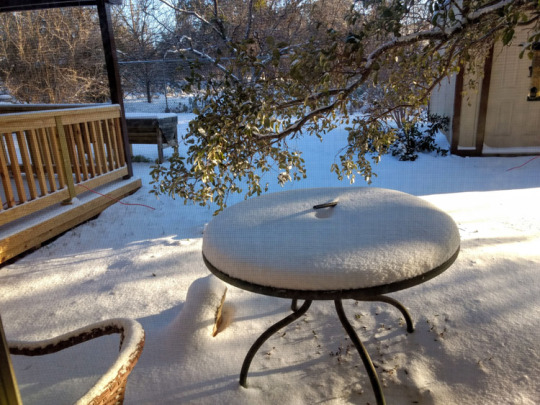
View On WordPress
#Dead Horse Canyon Saga Review#Indian Reservations#Readers&039; Favorite 5* reviews#self-sufficiency#Texas 2021 Freeze
4 notes
·
View notes
Text









#eclecticism#self-sufficiency#efficiency#Royaltycore#Princecore#Princesscore#Kingcore#Queencore#Victorian style#gears#clocks#screws steam engines#brass#top hats#waistcoats#crinoline#goggles#dials#Ochre#russet#beige#brown#taupe#black#white#royal blue#crimson#victorian
15 notes
·
View notes
Text
Homemaking, gardening, and self-sufficiency resources that won't radicalize you into a hate group

It seems like self-sufficiency and homemaking skills are blowing up right now. With the COVID-19 pandemic and the current economic crisis, a lot of folks, especially young people, are looking to develop skills that will help them be a little bit less dependent on our consumerist economy. And I think that's generally a good thing. I think more of us should know how to cook a meal from scratch, grow our own vegetables, and mend our own clothes. Those are good skills to have.
Unfortunately, these "self-sufficiency" skills are often used as a recruiting tactic by white supremacists, TERFs, and other hate groups. They become a way to reconnect to or relive the "good old days," a romanticized (false) past before modern society and civil rights. And for a lot of people, these skills are inseparably connected to their politics and may even be used as a tool to indoctrinate new people.
In the spirit of building safe communities, here's a complete list of the safe resources I've found for learning homemaking, gardening, and related skills. Safe for me means queer- and trans-friendly, inclusive of different races and cultures, does not contain Christian preaching, and does not contain white supremacist or TERF dog whistles.
Homemaking/Housekeeping/Caring for your home:
Making It by Kelly Coyne and Erik Knutzen [book] (The big crunchy household DIY book; includes every level of self-sufficiency from making your own toothpaste and laundry soap to setting up raised beds to butchering a chicken. Authors are explicitly left-leaning.)
Safe and Sound: A Renter-Friendly Guide to Home Repair by Mercury Stardust [book] (A guide to simple home repair tasks, written with rentals in mind; very compassionate and accessible language.)
How To Keep House While Drowning by KC Davis [book] (The book about cleaning and housework for people who get overwhelmed by cleaning and housework, based on the premise that messiness is not a moral failing; disability and neurodivergence friendly; genuinely changed how I approach cleaning tasks.)
Gardening
Rebel Gardening by Alessandro Vitale [book] (Really great introduction to urban gardening; explicitly discusses renter-friendly garden designs in small spaces; lots of DIY solutions using recycled materials; note that the author lives in England, so check if plants are invasive in your area before putting them in the ground.)
Country/Rural Living:
Woodsqueer by Gretchen Legler [book] (Memoir of a lesbian who lives and works on a rural farm in Maine with her wife; does a good job of showing what it's like to be queer in a rural space; CW for mentions of domestic violence, infidelity/cheating, and internalized homophobia)
"Debunking the Off-Grid Fantasy" by Maggie Mae Fish [video essay] (Deconstructs the off-grid lifestyle and the myth of self-reliance)
Sewing/Mending:
Annika Victoria [YouTube channel] (No longer active, but their videos are still a great resource for anyone learning to sew; check out the beginner project playlist to start. This is where I learned a lot of what I know about sewing.)
Make, Sew, and Mend by Bernadette Banner [book] (A very thorough written introduction to hand-sewing, written by a clothing historian; lots of fun garment history facts; explicitly inclusive of BIPOC, queer, and trans sewists.)
Sustainability/Land Stewardship
Braiding Sweetgrass by Robin Wall Kimmerer [book] (Most of you have probably already read this one or had it recommended to you, but it really is that good; excellent example of how traditional animist beliefs -- in this case, indigenous American beliefs -- can exist in healthy symbiosis with science; more philosophy than how-to, but a great foundational resource.)
Wild Witchcraft by Rebecca Beyer [book] (This one is for my fellow witches; one of my favorite witchcraft books, and an excellent example of a place-based practice deeply rooted in the land.)
Avoiding the "Crunchy to Alt Right Pipeline"
Note: the "crunchy to alt-right pipeline" is a term used to describe how white supremacists and other far right groups use "crunchy" spaces (i.e., spaces dedicated to farming, homemaking, alternative medicine, simple living/slow living, etc.) to recruit and indoctrinate people into their movements. Knowing how this recruitment works can help you recognize it when you do encounter it and avoid being influenced by it.
"The Crunchy-to-Alt-Right Pipeline" by Kathleen Belew [magazine article] (Good, short introduction to this issue and its history.)
Sisters in Hate by Seyward Darby (I feel like I need to give a content warning: this book contains explicit descriptions of racism, white supremacy, and Neo Nazis, and it's a very difficult read, but it really is a great, in-depth breakdown of the role women play in the alt-right; also explicitly addresses the crunchy to alt-right pipeline.)
These are just the resources I've personally found helpful, so if anyone else has any they want to add, please, please do!
#homemaking#homemaking resources#gardening#urban gardening#self sufficiency#self sufficient living#sustainability#sustainable living#homesteading#nontrad homemaker#nontrad housewife#urban homesteading#solarpunk#cottagecore#kitchen witch#kitchen witchcraft#crunchy to alt right pipeline#book rec#book recommendations#resource#long post#mine#racism tw#racism mention#transphobia tw#transphobia mention
24K notes
·
View notes
